Orientation – Tim Veling, Jessica Halliday
On the 1st of April, Civil Defence released a list of 128 earthquake damaged buildings earmarked for demolition. Speculation suggested that this list would grow to include an additional 500 buildings. As of 06/07/2011 the number of critically damaged buildings has grown to well over 900.
Christchurch’s central business district, "The Red Zone” has been off limits since February the 22nd. Wire mesh fencing was hastily erected to keep the general public out and military checkpoints were positioned on every road leading in. The soldiers that man these check points play card games and sunbathe, moving only to shift road blocks for demolition trucks and the occasional police car or fire engine.
It’s a strange feeling standing on the edge of the cordon, on the outside peering through the wire, or even turning and looking back towards the suburbs. Many of the buildings that mark the horizon line have been identified as dangerous and in need of major repairs or deconstruction. The landmarks I used to look for to find my bearings may not be standing when the fences are eventually taken down and the military are sent home. I have begun documenting the skyline before it changes forever, in a way that shows the context in which these endangered buildings sit. When the city reopens, we’ll see with our own eyes how fast the heart of our city has changed. It’ll be a time of remembrance, a time to take stock and mourn, and a time of reorientation.
—Tim Veling
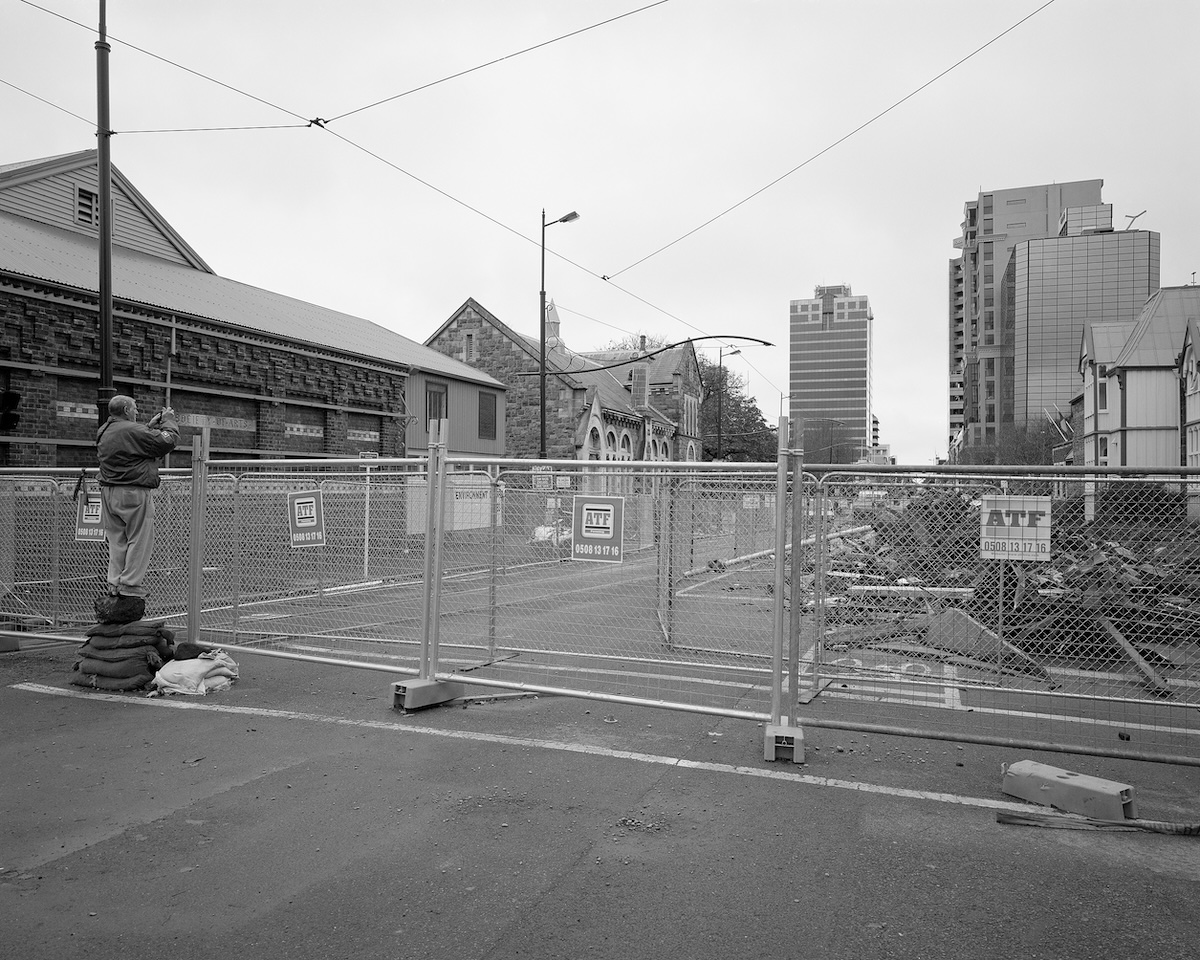
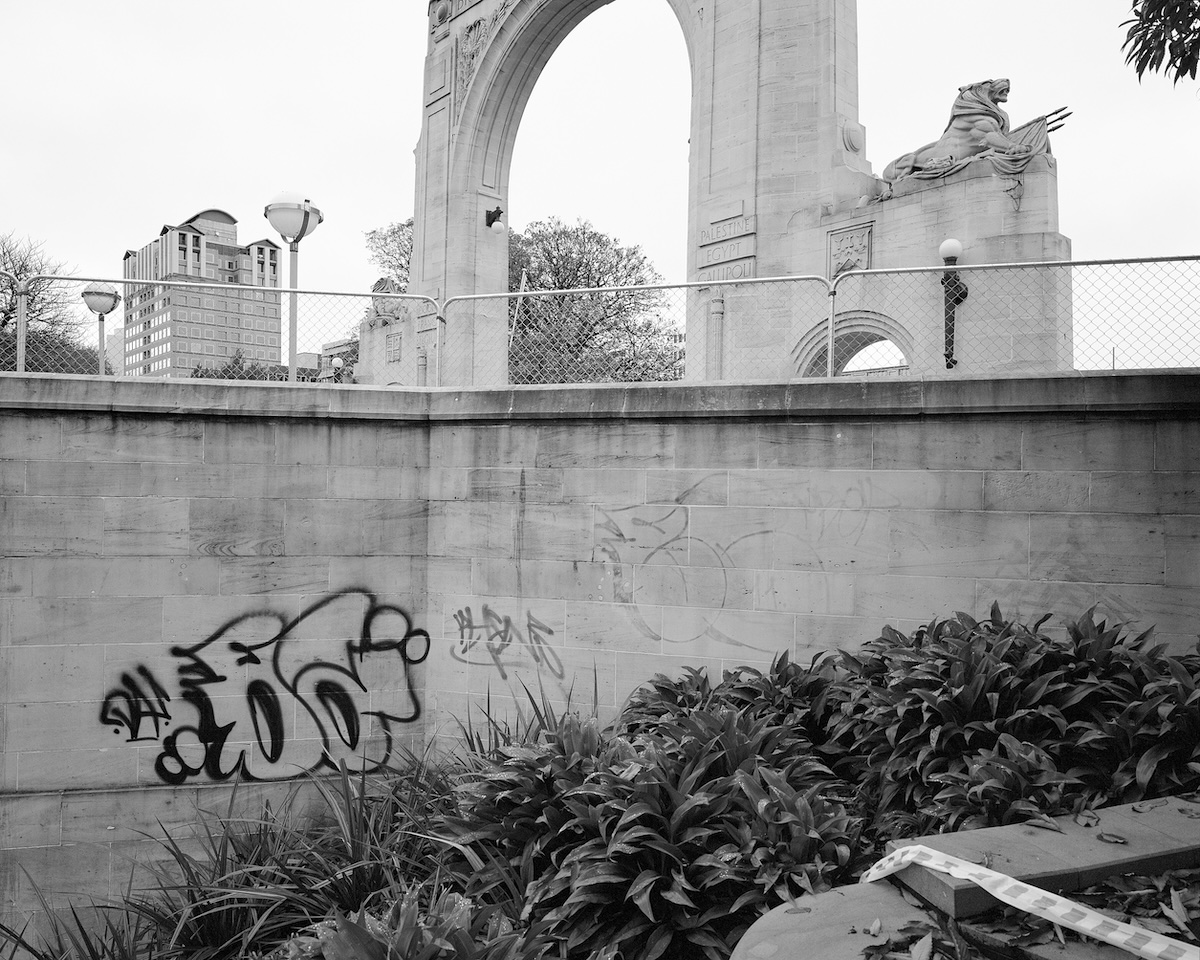
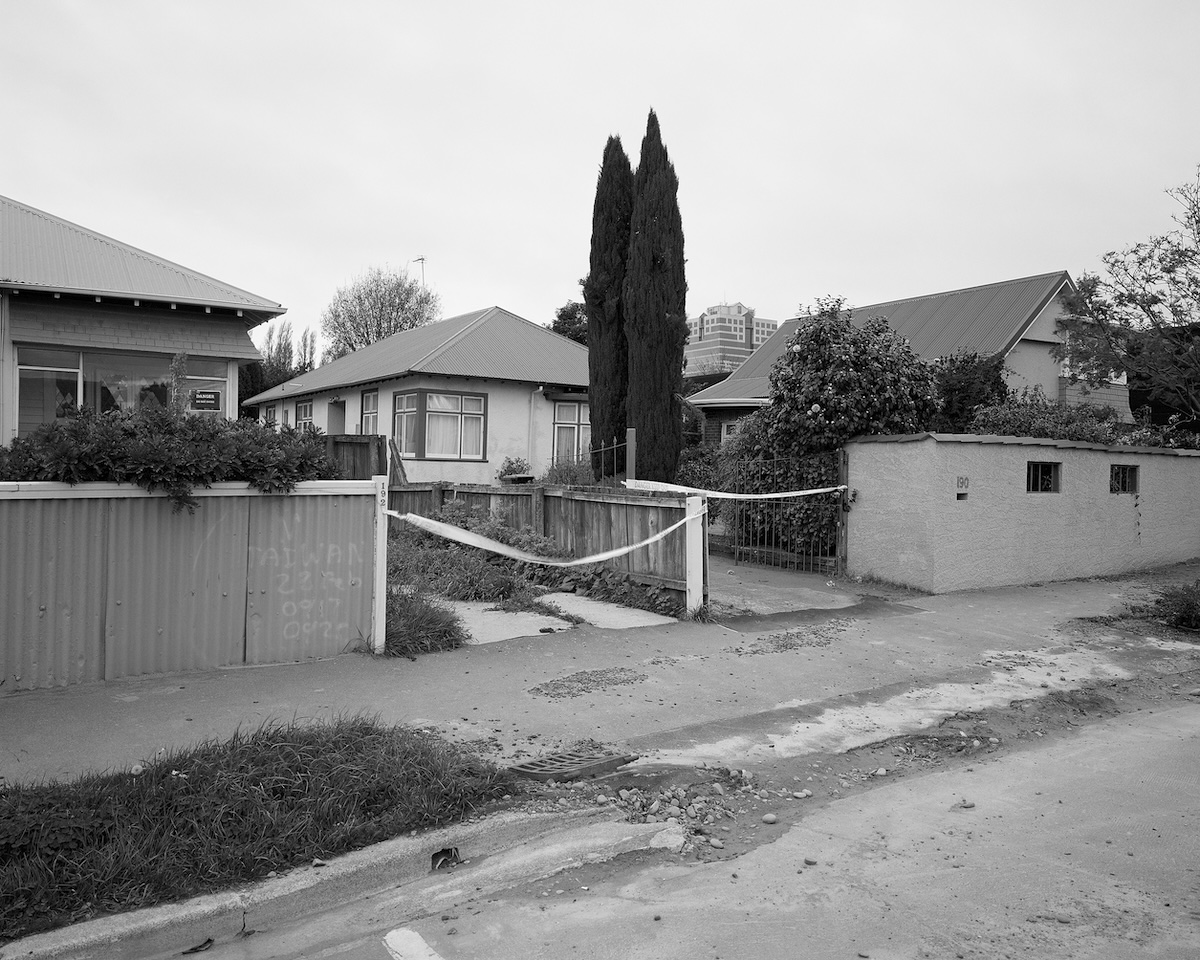
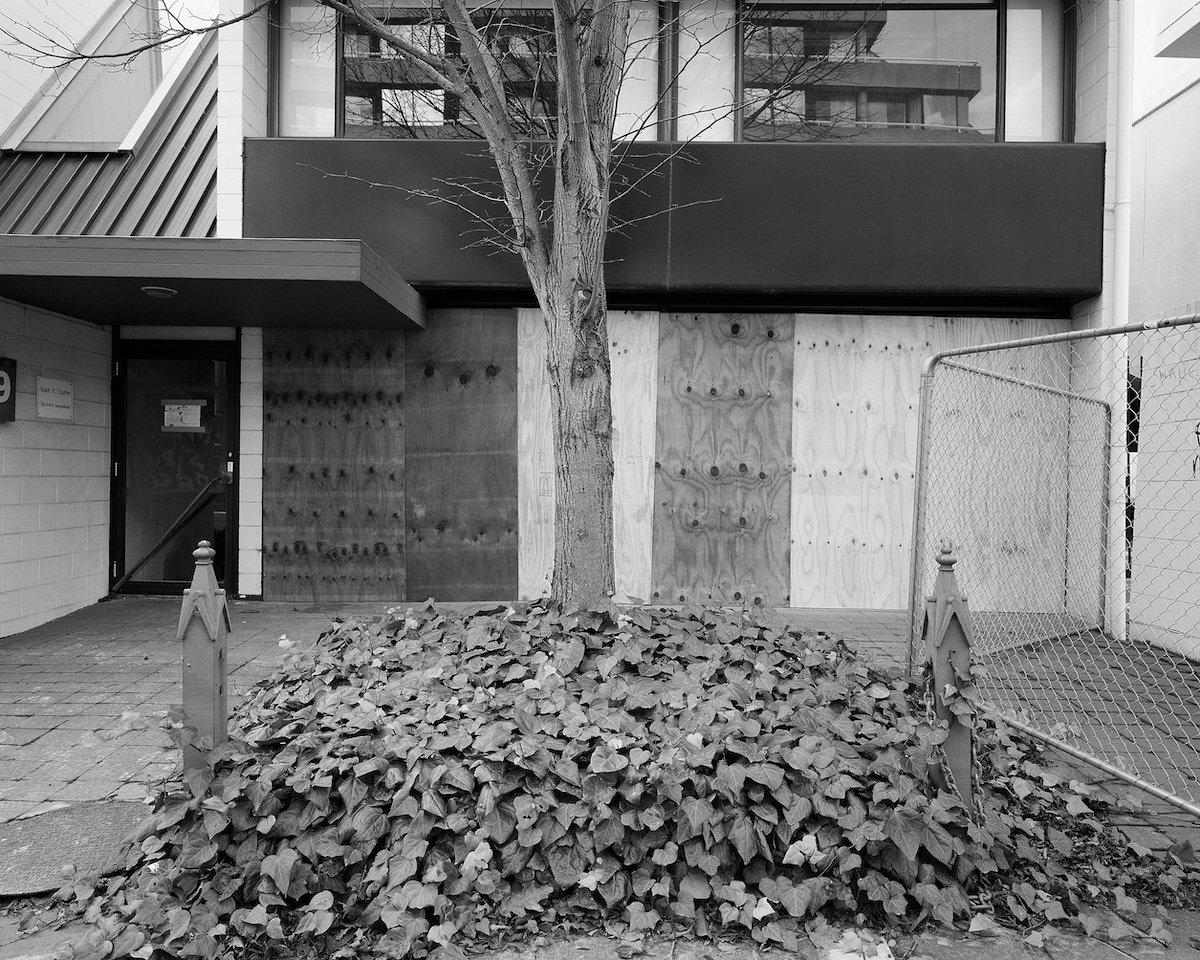
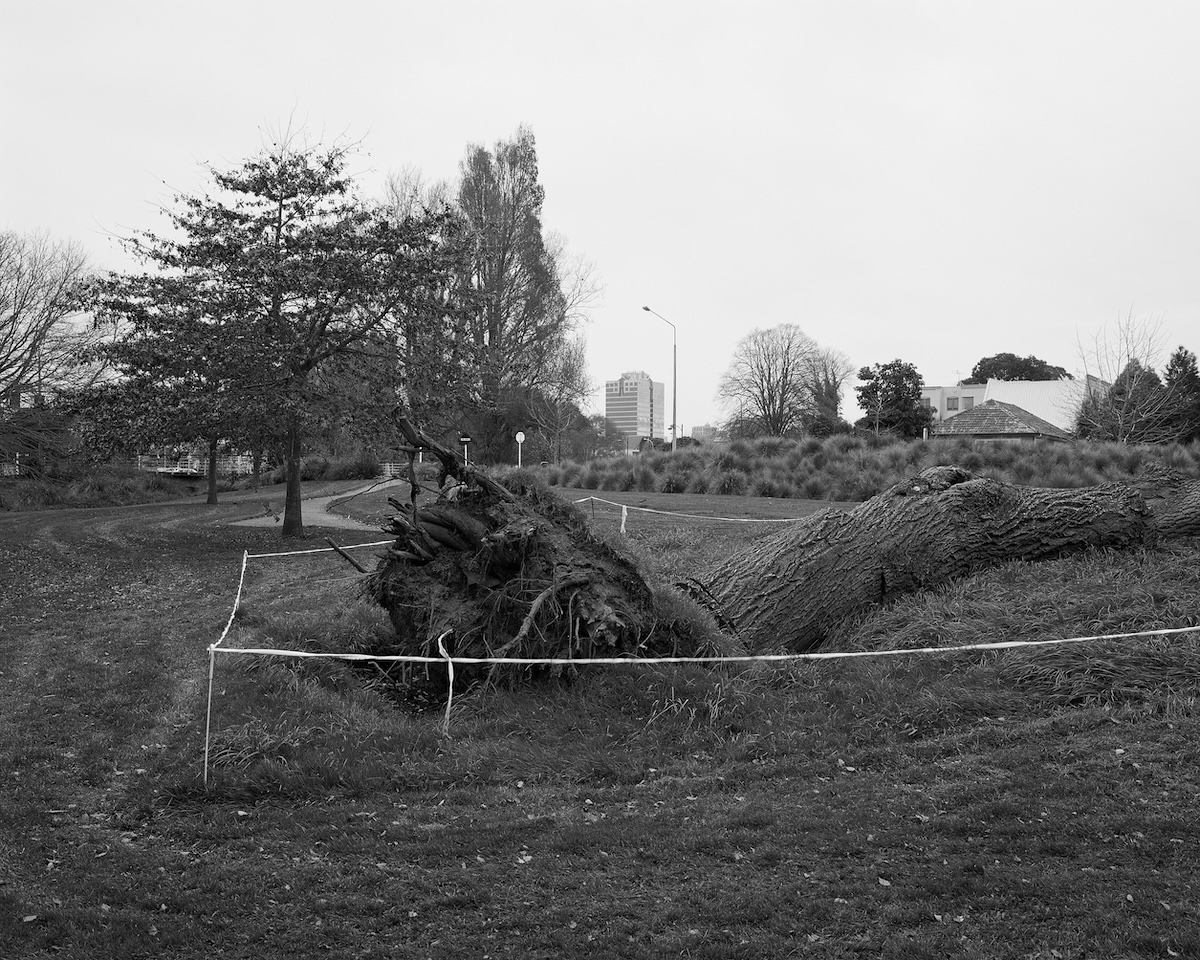
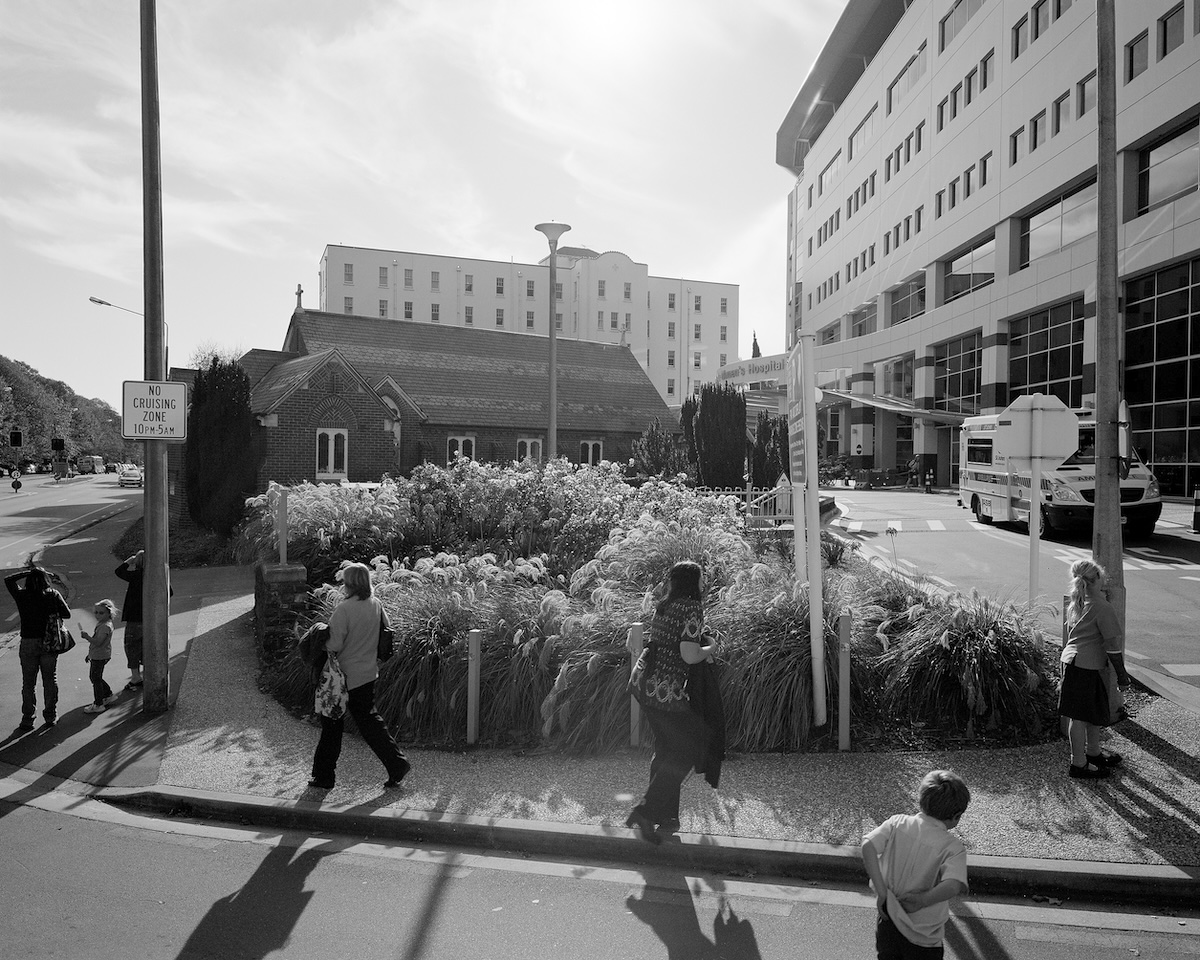
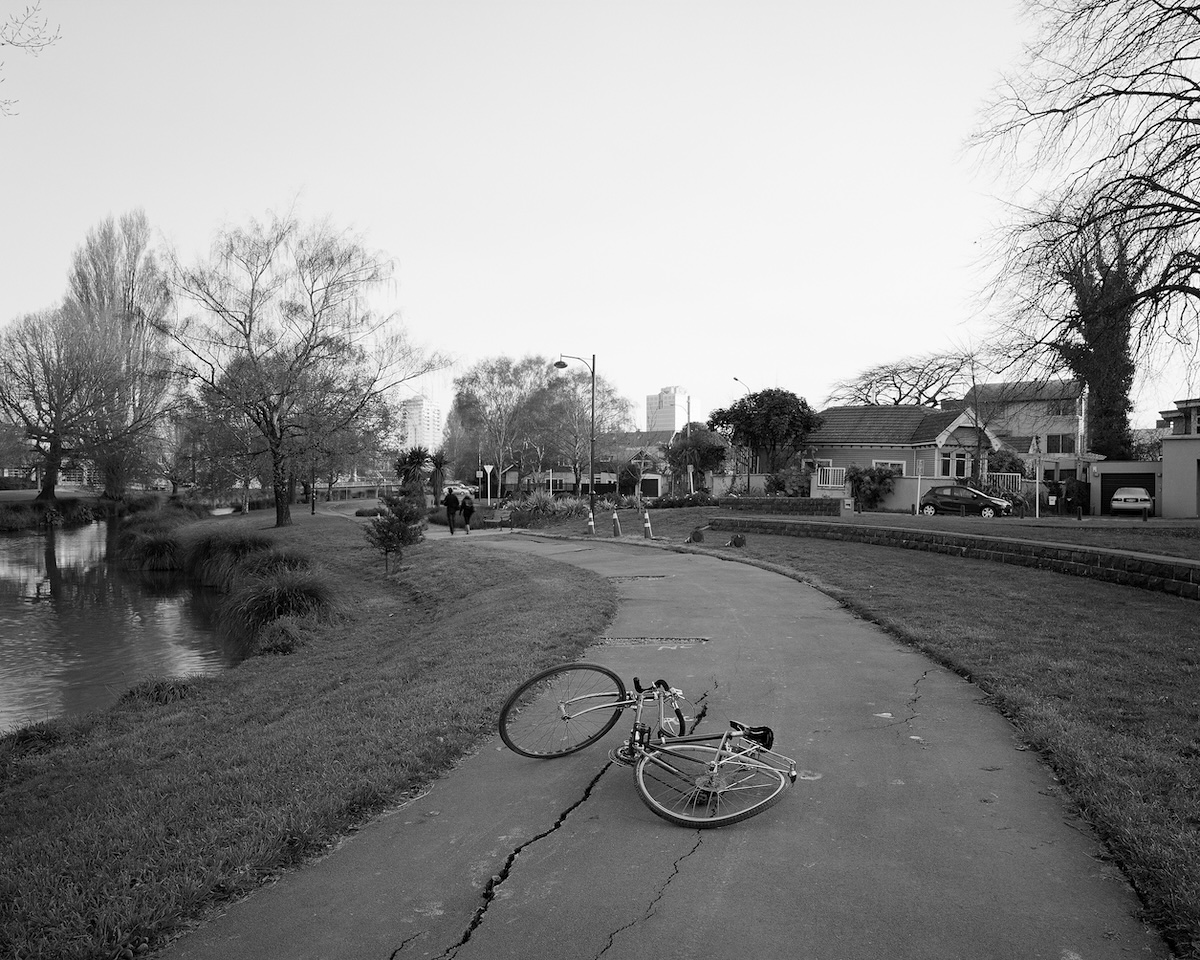
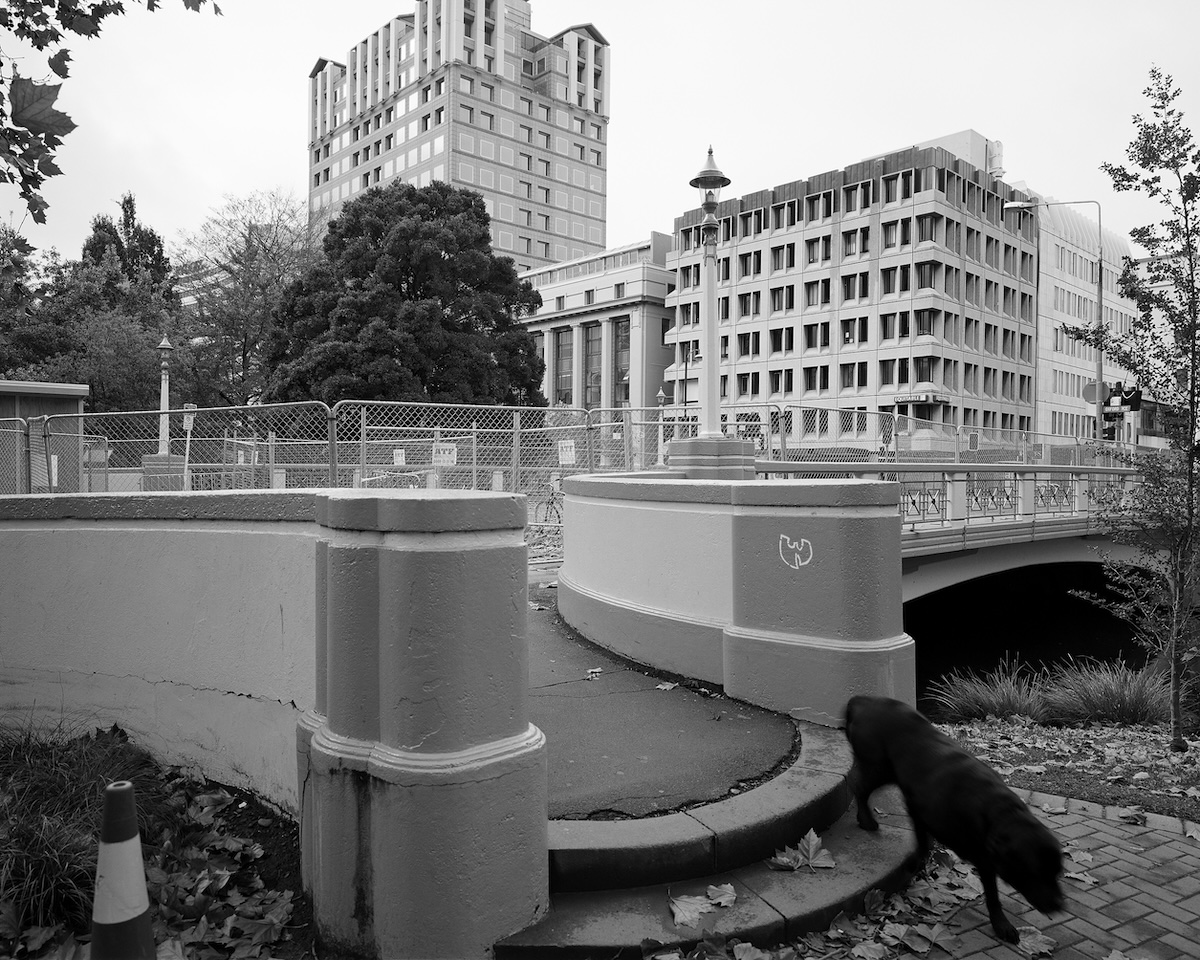
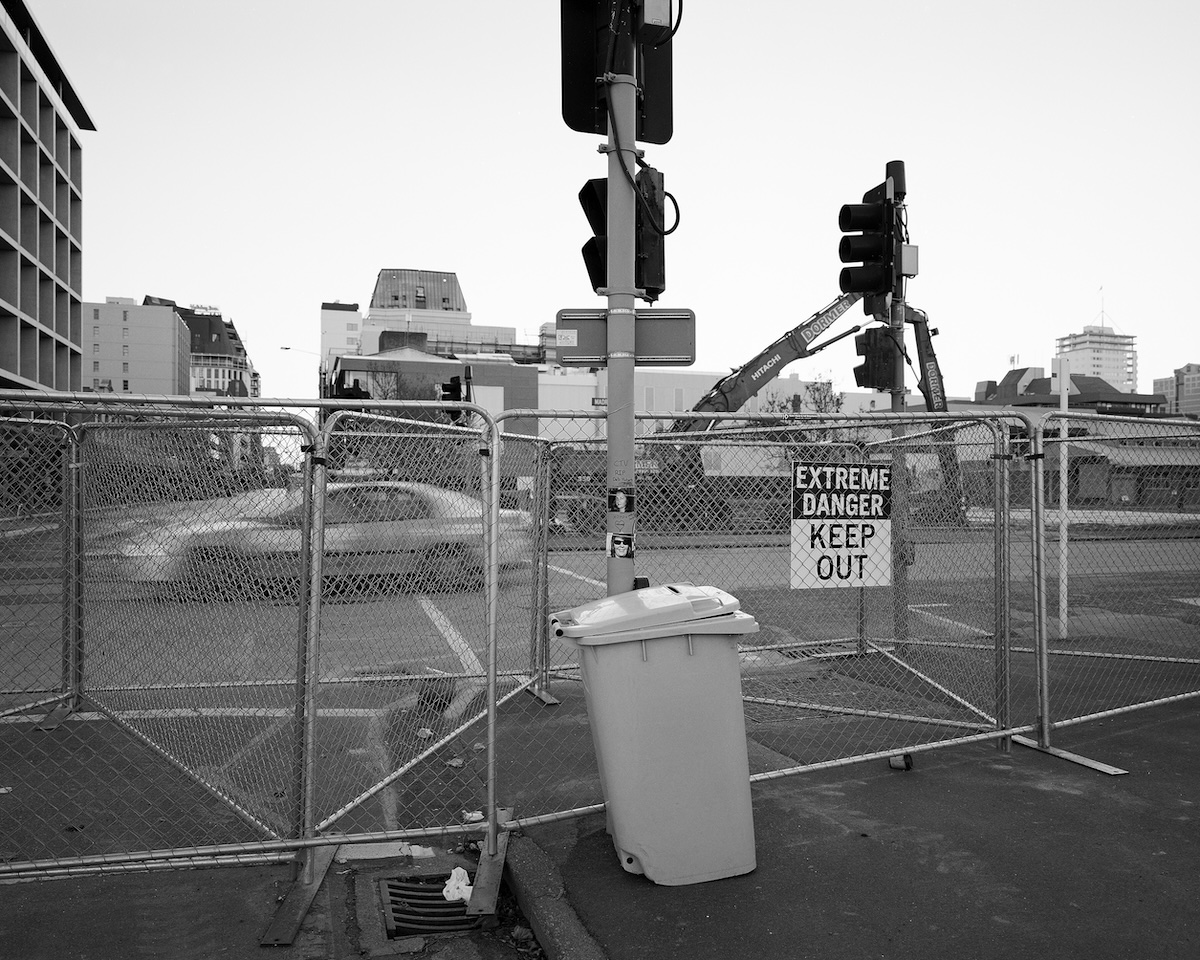
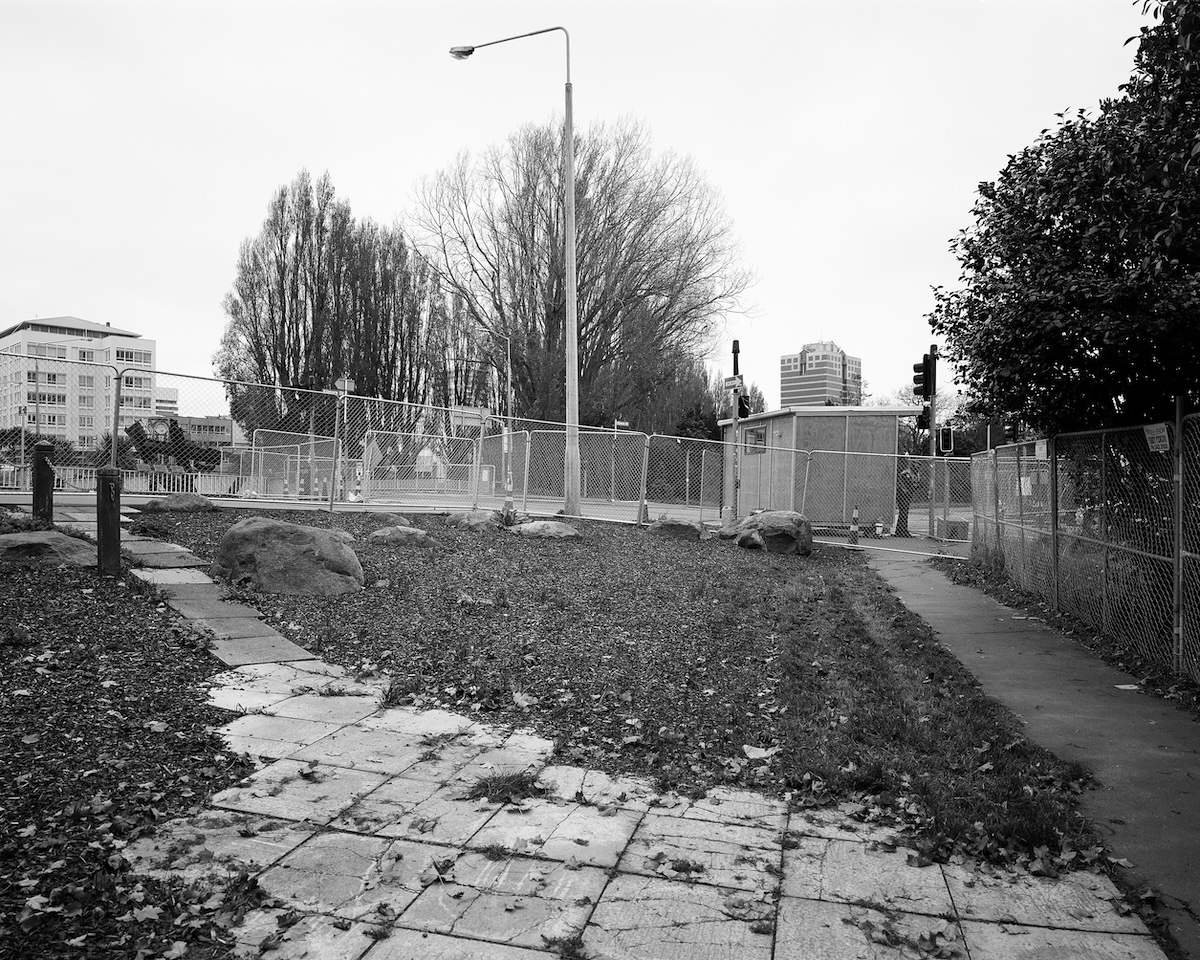
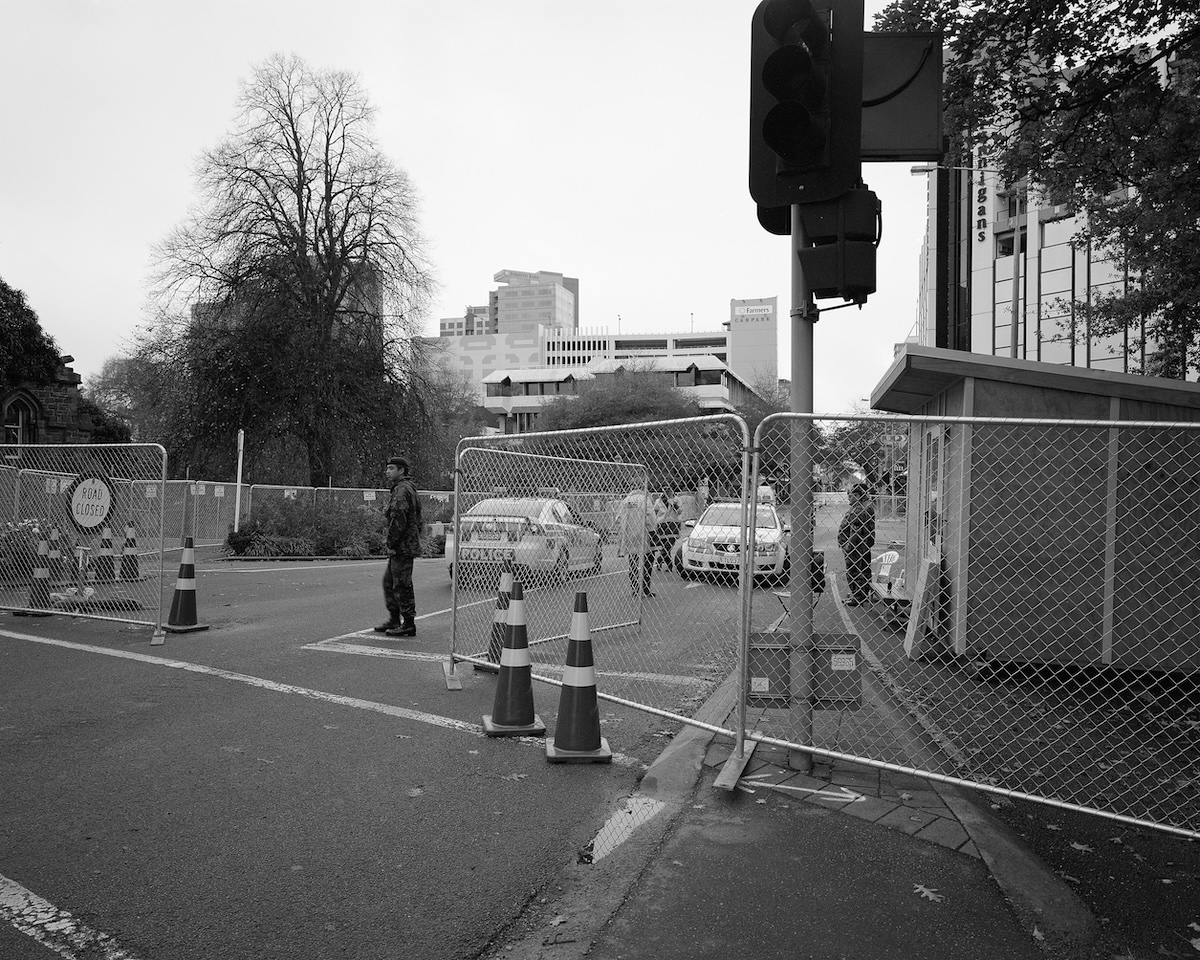
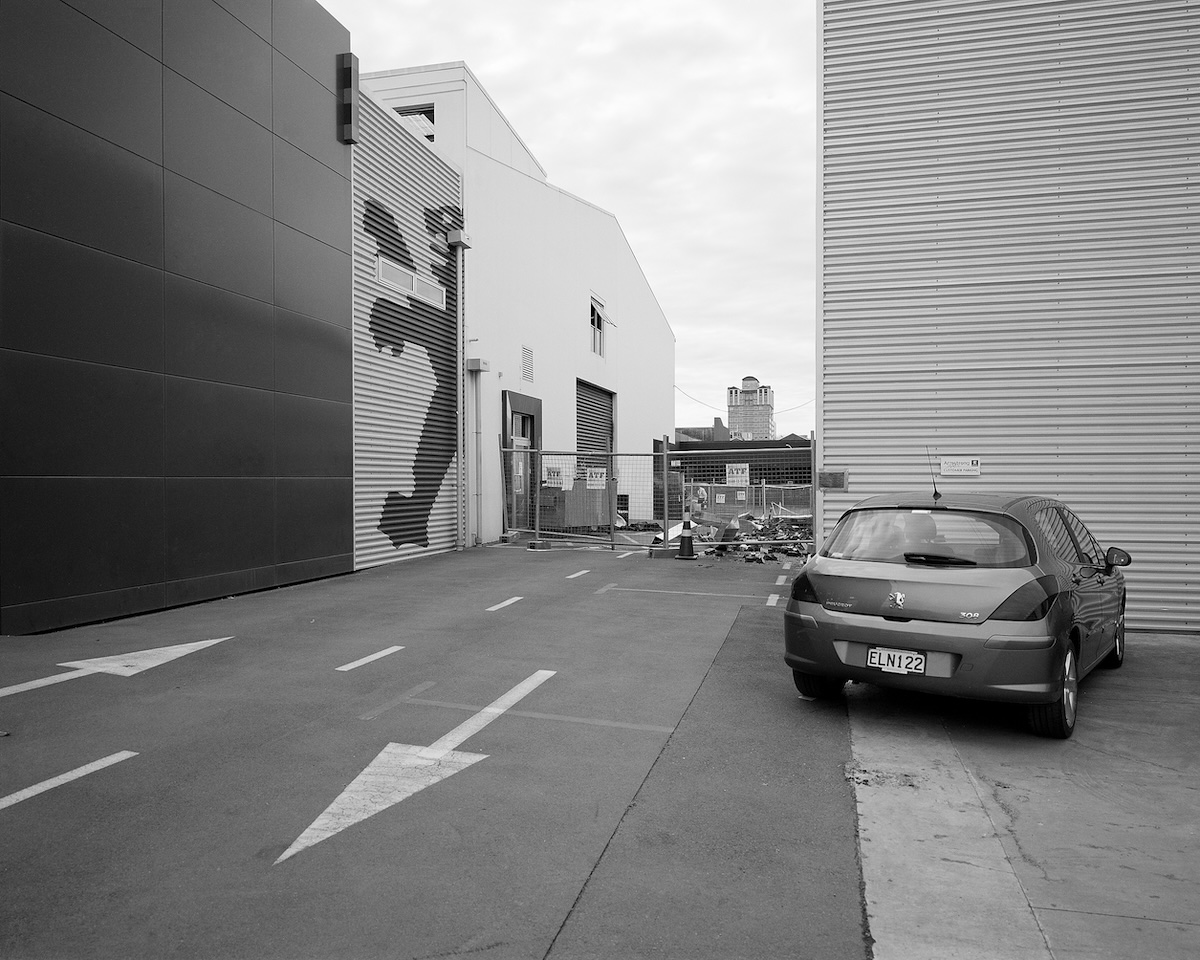
"We may live without her [architecture] and worship without her, but we cannot remember without her.”
— John Ruskin, The Seven Lamps of Architecture, 1849.
Tim Veling’s recent photographs of central Christchurch pictured from the edge of the ‘red zone’ bear no relationship to traditional photographs of architecture-with-a-capital-A. There’s no heroism, no grand artefact; in these photographs architecture becomes an all encompassing term embracing the incidental as well as the significant.
Neither is he interested in the alternative and commonly captured tectonic drama of our ravaged city’s drastically damaged structures and piles of rubble. Instead, he quietly examines the everyday reality where architecture isn’t a rarefied design object or a piece of real estate, softly bringing the wider urban, social and psychological context within the frame.
This is a broader view of the inner city domestic street or the rear or rooftop of familiar buildings or sites. In this view are both direct and indirect suggestions of our social, political and personal interactions with the built environment, as it was, as it is and as it might be. An abandoned bike, faded tagging, a child in a buggy, a Unimog casually parked on an inner city street.
In every image one or more towers peak over other structures and form the skyline. Many of them will not push into the sky in the near future. Some, such as the Hotel Grand Chancellor, will be demolished under warrants issued by CERA, the fate of others will be determined by economic equations. By drawing attention to the presence and role of these buildings in our urban lives, Veling raises questions about the consequences of holding knowledge and having experience of a specific urban environment and the matter of memory and the city.
These are the multi-story buildings that Veling uses to locate himself within, and find his way through, the city. By gaining a spatial knowledge and memory of the city and its constituent parts through regular use (probably on foot) these buildings have been come codes for both deliberate and emotional way-finding for many of us in Christchurch. “I’m near the winding Avon; I’m to the north of Cathedral Square; I’m where I shared my last embrace with my lover.“
Spatial memory is so important to human survival it is regarded as a ‘natural’ memory. In the classical world, this ‘natural’ memory was used to aid ‘artificial’, purposeful memory. Natural memories of rigid, ordered spaces and objects and places within space, such as the interior of a house or buildings within a city, are used as a structure on which to ‘peg’ other forms of knowledge. Although an imaginary spatial image could be used, the ready availability of existing memory banks of real spatial relationships between objects as found in the house or the city made them easy architectural mnemonics.
Memories so easily gained and so vital to human survival are unerringly, unwittingly ‘pegged’ with emotional associations. What will happen to us who live in Christchurch, individually and collectively, when more of these buildings vanish from our knowledge and experience of the city? If our city no longer matches our memories, will we still identify and comprehend it, will it still mean something to us, will we still find our ways through her streets?
—Jessica Halliday
Reference List
All photographs originally in colour. www.timjveling.com
Originally published in The Silver Bulletin #1, March 2011, Christchurch, NZ.